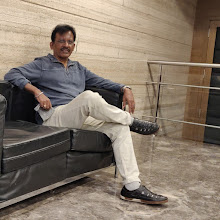Somewhere between the whisper of wind and the silence of stars,
a small bird lifts its wings—
and what follows is not flight, but a hymn.
It eats barely fifty grams of food,
yet crosses oceans and continents for fifty days without rest.
Science observes and writes equations,
but numbers cannot hold wonder.
For the bird is not moving through air—
it is the movement of air itself.
How can such a fragile creature traverse twenty thousand kilometers on a single breath of life?
Not because it burns fuel—
but because it lives in perfect harmony.
Each heartbeat, each wingbeat, each gust of wind—
woven into one unbroken rhythm,
a cosmic coordination beyond effort or resistance.
Hibernating beings live on stored prana,
but this bird lives on flowing prana—
a current born of surrender, not struggle.
It doesn’t fight nature;
it dissolves into nature so deeply
that nature begins to fly through it.
Science calls it efficiency.
The mystic calls it grace.
But both are shadows of the same light.
No laboratory can replicate it,
for what sustains the bird is not energy—
it is awareness.
The bird does not know God.
It does not believe in science.
It simply is the prayer it never speaks. 🌿
🌌 The Universe, the Divine, and I
I once worked among people who said,
“There is no God.”
They fought against idols, rituals, and fear.
They stood for courage and reason.
I honour that fire even now.
But one quiet evening, beneath an endless sky,
I asked myself:
If there is a God beyond the universe—
then whose universe is this?
If He stands outside creation,
has He not exiled Himself from His own breath?
From that moment, I stopped searching above.
For me, the universe itself is divine.
The atom and the galaxy are not creations of God—
they are expressions of God.
A coin and the metal within it are not two.
A dancer and the dance cannot be separated.
Existence and divinity are one rhythm.
I am not an atheist.
I am not a believer.
I am a child,
staring at the sky—
not worshipping, not debating,
but wondering.
The atheist denies God.
The theist defines Him.
I only witness Him—
in the pause between breaths,
in the rhythm of the sea,
in the trembling leaf that drinks morning light.
Call it Nature.
Call it God.
Call it the Unnamed Pulse of Being.
Whatever the name, the truth remains one:
The Universe and the Divine are one breath—
and I am that breath,
aware of itself.
🕊️ The Final Whisper
And perhaps, somewhere above,
a small bird still flies—
not to reach heaven,
but to remind heaven
where it truly lives.
> To witness the universe without the cage of belief or denial —
that is the purest form of devotion.
The bird flies by harmony,
the mind lives by wonder.
Between them lies the truth:
Life itself is divine. 🌿



